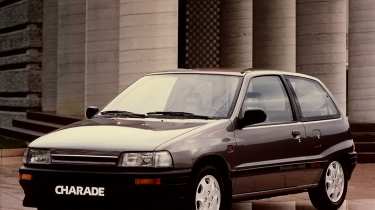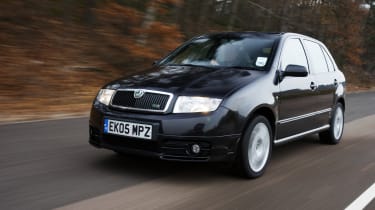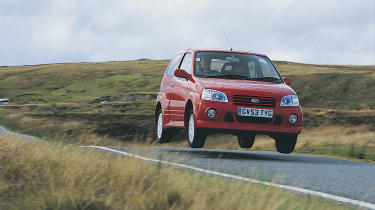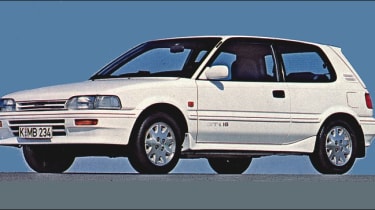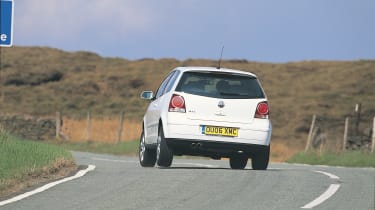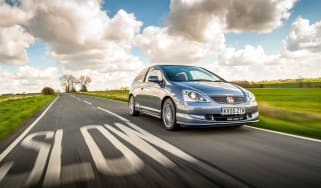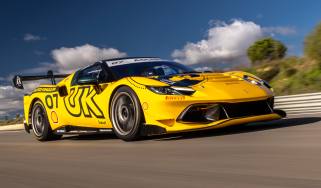Twenty forgotten hot hatchbacks – the fast, the fun and the rare - Ten forgotten hot hatchbacks - page 4
The appeal of some hot hatches endures longer than others, but these twenty cars are well worth remembering
Hot Clios, and to a lesser extent hot Renault 5s, have long been part of the motoring landscape. But Renault’s performance car talents stretched far beyond its smallest products, and the Renault 19 16v was one of the best.
Few remain on the roads today, and that’s a real shame. Its 1.8-litre, 16v engine thumped out 137bhp – not a bad number for the day – for a 7.9-second 0-60mph sprint.
It also had '...exceptional handling and roadholding that inspires confidence after a mere handful of miles behind the wheel', according to ex-evo and contemporary Performance Car journalist, John Barker.
Skoda Fabia vRS
‘The pulse is very hard, noisy and unmistakably diesel. You really need to fight your prejudice, but get out on the road and the way the vRS hauls is wonderful, pulling the Fabia up the road with real conviction.’
Our first drive in evo 057 gave no illusions as to the fuel powering Skoda’s first proper hot hatch. Unfortunately, we summarised the Fabia vRS as a car that ‘lacks emotion and raw speed’, and in years to come it’s unlikely to be lusted after like its petrol opponents.
But for a subset of drivers, the vRS is all the car they could need. Strong mid-range performance, excellent economy and handsome styling definitely give it appeal. Skoda’s move to petrol for the next generation car, and subsequent decision not to produce another vRS, seems a great shame.
Suzuki Ignis Sport
In the first decade of the 2000s, it was still eminently possible to buy a lightweight, cheap hot hatchback, still in the mould of their revered 1980s predecessors.
The list included such luminaries as the Peugeot 106 Rallye, Citroen Saxo VTS, Ford SportKa, and the much-loved Fiat Panda 100HP. But one you might have forgotten is the gloriously back-to-basics Suzuki Ignis Sport.
In evo 072 we described its ‘infectiously old-school approach to making brisk progress’. The styling was gawky – if less forgettable than standard Ignis models – but a pair of Recaro seats and a fizzy twin-cam 1.5-litre four-pot promised rally-car thrills. Indeed, the Ignis found much success on the stages too.
Toyota Corolla GTi-16v
Engines seem to be a defining feature of Japanese hot hatchbacks. When Performance Car tested the Corolla GTi in 1989, it said that the chassis ‘isn’t quite the equal of either the Golf GTI’s or the Peugeot 309’s.’
But the engine? A gem. Developing 123bhp at 6600rpm, the 1.6-litre, 4A-GE unit would happily rev on to 8000rpm. ‘It’s a rare treat to be able to take a roundabout steadily in third at, say, 20mph and to accelerate smoothly away in the knowledge that you can race right up to 90mph before changing into the next gear,’ testers said.
Unfortunately, it was the French hatchbacks of the era that really captured imaginations. So while 205 GTis and even 309s are fondly remembered, the Corolla sits in the sidelines.
Volkswagen Polo GTI
Pity the poor Volkswagen Polo GTI. Since the first GTI-badged Polo appeared in the early 2000s, it’s lived in the shadow of its bigger, more talented Golf GTI sibling.
That didn’t change in 2006 when VW launched a turbocharged version, styled little differently to the Mk5 Golf GTI of the time. There was nothing wrong with its performance – in evo 093, Henry Catchpole said the engine 'feels instantly keen, the Polo pulling at its lead, straining to be off down the next straight'.
The problem was in the ‘viceless if not particularly sophisticated’ levels of fun it dealt out. Subsequent Polo GTIs have been better still, and more handsome, while those after a bargain hot hatch now go for the Golf.

